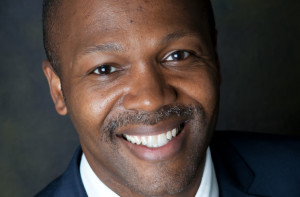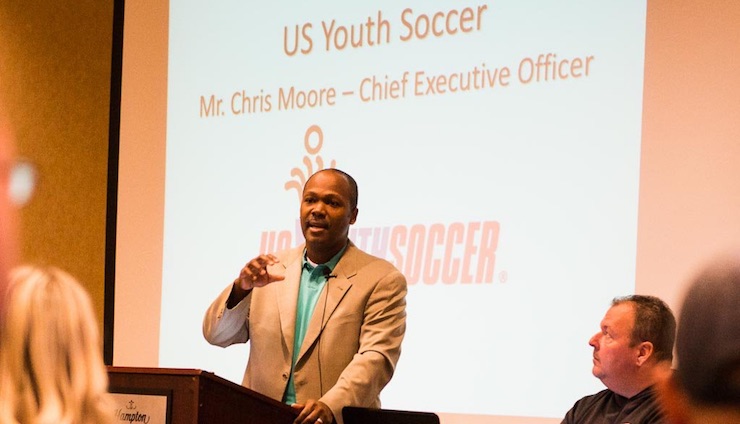Statement from Youth Council Technical Working Group to U.S. Soccer
Today the press release, “Statement from Youth Council Technical Working Group to U.S. Soccer,” from AYSO, MLS, SAY Soccer, U.S. Youth Soccer, USFF, USSSA and U.S. Club Soccer was posted.
An impressive list of youth soccer organizations who usually are more competitive with each other than acting as a unified front.
The first paragraph says,
“The Youth Council Technical Working Group unanimously agreed that there has been generally insufficient dialogue between the U.S. Soccer Federation technical staff and the technical leadership of the various youth membership organizations.”
“We all share a common goal, and we are all very supportive of U.S. Soccer,” said Kevin Payne, US Club Soccer‘s CEO in an interview today. “We just believe that more conversation is needed. We are at the beginning of a fruitful collaborative process.”
“I don’t believe this has ever been done before,” said Chris Moore, U.S. Youth Soccer‘s CEO today. “Where competing youth organizations gather together in a roundtable format to share best practice learnings, exchange member feedback and brainstorm actionable implementation solutions.”
“Despite our differences in structure, scale and size, what we have discovered is that we have much more in common with the other youth members of U.S. Soccer than we have differences. At the end of the day we’re all trying to achieve the same thing: Grow soccer in America. There were extremely positive and meaningful conversations shared, and we will continue to have more, especially with the support of our National Governing Body, U.S. Soccer,” said Moore.
Payne and Moore’s sentiment of collaboration was echoed by all.
“We want to work as a collective group, with U.S. Soccer, to ensure that we are focusing on the youth player,” said AYSO‘s Sahar Milani. “As with any mandates, conversations must be had and questions must be addressed to ensure we are doing everything we can to help develop our youth soccer players. AYSO’s main focus, as it has always been, is on player development and safety.”

Why do the youth organizations want to spearhead better communications with U.S. Soccer now? The answer is clear – the calendar-year birth date mandate which has saturated the youth world with questions and far reaching implications.
“I can’t think of a similar policy from the U.S. Soccer that has as much impact since the advent of the DA – USSF Development Academy — and then we had meetings with a lot of conversation in advance of the roll out,” said Payne. “Big questions are on the horizon.”

“U.S. Youth Soccer, along with our member State Associations and Clubs, have been working through the difficulties of implementing the U.S. Soccer Player Development Initiatives (PDIs), which is why we took the unprecedented step of convening with members of the Federation’s Youth Council technical work group at our headquarters back in December,” said Moore. “The purpose of bringing the various youth organizations together was to have an open and honest dialogue regarding these initiatives.” U.S. Youth Soccer — with 3,055,148 players registered — is the largest member of the U.S. Soccer Federation.

The release below may be a little outdated as the determination to meet 4 times a year has been agreed upon, with the first meeting set for April this year, but the joint statement below reflects the youth soccer organizations’ serious desire to remind U.S. Soccer that they need to be part of the process — and not just be downstream to implement policies on the soccer field across America — policies which have been decided behind closed doors in a proverbial ivory tower.
“Since our initial meeting in Frisco, leaders from U.S. Soccer have joined the work group in a very constructive way — to help us sort through many of the challenges posed by the new player development initiatives,” said Moore. “Our hope is that the Federation will continue to work proactively with their youth members in a collaborative fashion to continue improving the game. Our ultimate goal is to promote open communication, inclusion, and to ensure that we have a seat at the table as significant decisions affecting the youth marketplace are being made.”

“At the meeting in Frisco, all the major groups were present and everyone was talking about how to improve youth soccer and addressing the issues of concussions,” said Alex Para, United States Futsal Federation’s CEO. “This was not a political meeting, it was focused on trying to determine how to implement small-sided games.”
As soccer is a team sport, perhaps a team approach is only logical and will work better when handling the challenges ahead.
Positively impacting the game in the United States cannot happen in a vacuum; working together is absolutely essential,” said Moore.
While the new Age Group and Small-Sided Games Mandates from U.S. Soccer is an initiative to improve the game of soccer and help players, the general feeling is that the mandates were forced and this is an important and powerful word. Americans, by our very nature, do not like to be forced.
All the youth soccer organizations have worked with their states, regions, leagues and clubs to help implement the changes. All organizations have confronted challenges which they have worked hard to turn into opportunities.
What needs to be done to make sure we are developing the best homegrown players we can? Everyone agrees that the structure needs improvement and youth soccer’s culture needs to be focused on player development and not on the pay-to-play business of soccer.

Perhaps the socratic based discussion determining presumptions and bias will benefit the game, and help all the millions of people these decisions effect.
We are suggesting a conversation works to produce better outcomes,” said Payne.
 The Joint Statement continues…
The Joint Statement continues…
To: Leaders and members of U.S. Soccer
From: Youth Council technical leaders
Subject: Inclusion in policy discussions
The Joint Statement continues …
Substantial questions remain about the impact of the new calendar-year registration model, and the interpretation that a player’s eligible competition year is determined by his/her age in the year in which the competition ends. This change results in every player moving up one age group and may not align appropriately with the mandated age appropriate play guidelines.
There are broad concerns about the efficacy of those new guidelines, which should have been addressed prior to broad dissemination of the materials.
Not only does the Federation have a responsibility to discuss such broad issues with its membership, but a transparent and inclusive process will produce better outcomes for everyone.
The Youth Council Technical Working Group would like the Federation to agree to a formal, institutionalized communications process to ensure that an ongoing dialogue is established with the youth members. Federation technical and administrative leadership should schedule approximately three meetings annually with the Youth Council Technical Working Group and other meetings as needed with ad-hoc sub-committees of the Group.
Specific issues, which should be discussed include:
- Calendar-year birth date and implications
- Age-appropriate play guidelines
- Field sizes
- Goal sizes
- Team sizes
- Build-out lines
- Concussion protocols and practical implications
- Modifications to the Laws to accommodate the above
- Broad player development philosophy
- Coaching education policies
- Licensing philosophy
- Access
- Communication
- CEU’s
It is the intention of the Youth Council Technical Working Group to cooperate closely with the Federation and support its efforts to raise the standard of development for all youth players. Through regular dialogue and a rigorous examination of these and other related issues, we believe that the best outcomes can be achieved for all interested parties.
From Aug 24, 2015 – The press release on U.S. Soccer Coaching Initiatives Target Improvement in Youth Development Standards from U.S. Soccer






